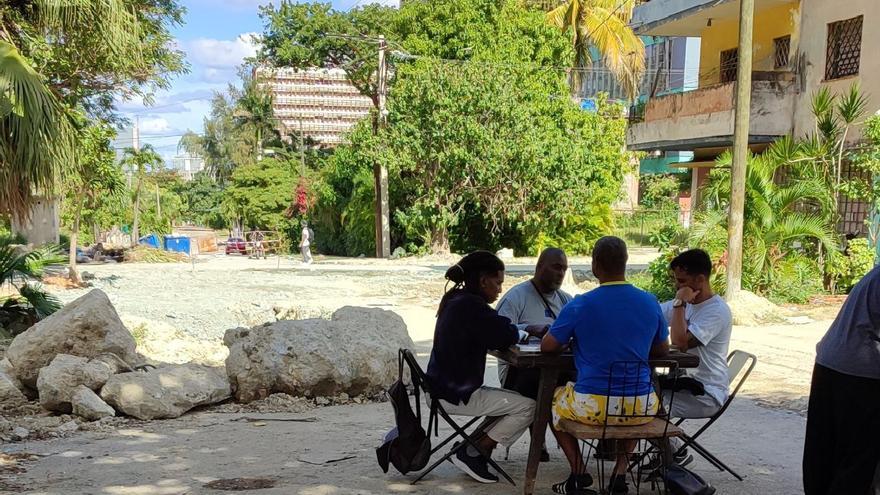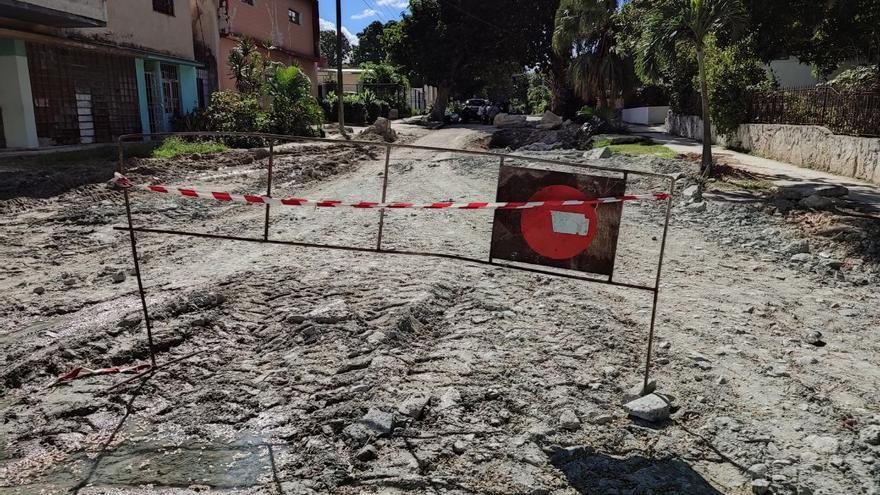
![]() Natalia López Moya, Havana, January 02, 2024 — In the first days of January the noise of nearby Rancho Boyeros Avenue calms down, but the clacking of dominoes echoes in the neighborhood. The neighbors of Marino Street on the corner of Santa Ana, in Nuevo Vedado, take advantage of the holidays to put out the table and look for their double nine. This 2024, although diminished by emigration, they have greater reasons to get outside: after months in which an excavation prevented transit through their block, now the hole has been filled by Aguas de La Habana, although the work is a mess.
Natalia López Moya, Havana, January 02, 2024 — In the first days of January the noise of nearby Rancho Boyeros Avenue calms down, but the clacking of dominoes echoes in the neighborhood. The neighbors of Marino Street on the corner of Santa Ana, in Nuevo Vedado, take advantage of the holidays to put out the table and look for their double nine. This 2024, although diminished by emigration, they have greater reasons to get outside: after months in which an excavation prevented transit through their block, now the hole has been filled by Aguas de La Habana, although the work is a mess.
“At least we didn’t have to spend Christmas with all this full of water and mosquitoes,” acknowledges Amanda, one of the neighbors who, for more than three months, saw how the excavation was emptied of workers and became “a lagoon.” State employees repaired a leaking pipe that gets its water from the Palatino water treatment plant, built at the end of the 19th century in the municipality of Cerro.
The break in the pipe left a part of the municipality of Plaza de la Revolución without water, and, despite the triumphant official deadlines, the work lasted until December. “We were climbing the walls; on this block there is pizza business, a privately-owned business and several rental houses. All in the red because when people got to the corner they were scared looking at that hole full of water,” another neighbor confirms to this newspaper.

Nobody knows if the breakage of the pipe was finally solved, or if, overcome by the magnitude of the damage, the workers of Aguas de La Habana only covered the hole to placate the nearby residents. “After weeks when nothing happened, one day they arrived in the morning and began to throw in dirt, but the brigades never showed up to cover it with asphalt so this now looks like a country town.”
For years, the neighbors of Marino Street had been complaining about the deterioration of the road that passed over the pipeline. The street had been sinking for a long time, and many warned of its possible collapse. In mid-2023, a pothole became so alarming that residents chose to put up a warning sign on their own, trying to avoid a misfortune.
To attract attention, they reported that many of the officials of the nearby Ministry of Agriculture parked their vehicles on that street and also evoked the imperatives of the nearby Panataxi base, the fleet of “yellows” destined to transport tourists from José Martí International Airport to Havana. Not to mention the adjoining exit point for ambulances.
The urgency didn’t much matter. Aguas de La Habana took its time and much more. This January, between red signs of “do not pass,” stones extracted from the substrate that mimicked a Martian landscape and frustration for so many months sunk in the mud and waiting, the neighbors of Marino Street decided to try their luck. They chose to set the table in a shady area, but the shade was in the street. A few meters away, the poorly-packed, soft earth warned of the danger: below the surface, nothing has been solved.
Translated by Regina Anavy
____________
COLLABORATE WITH OUR WORK: The 14ymedio team is committed to practicing serious journalism that reflects Cuba’s reality in all its depth. Thank you for joining us on this long journey. We invite you to continue supporting us by becoming a member of 14ymedio now. Together we can continue transforming journalism in Cuba.
